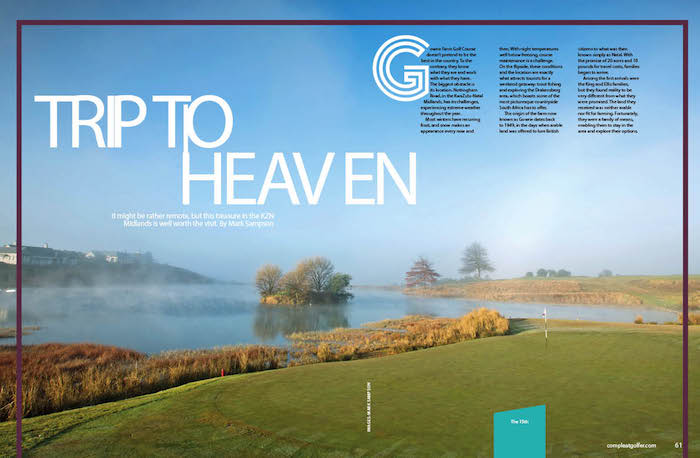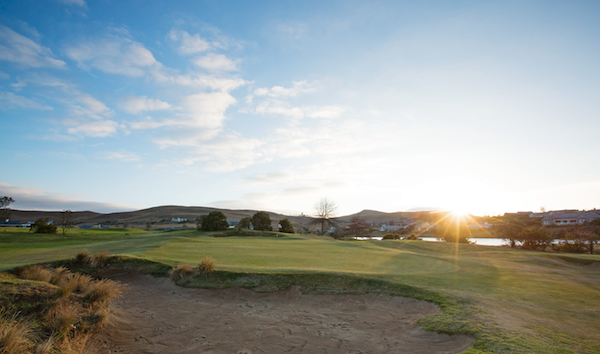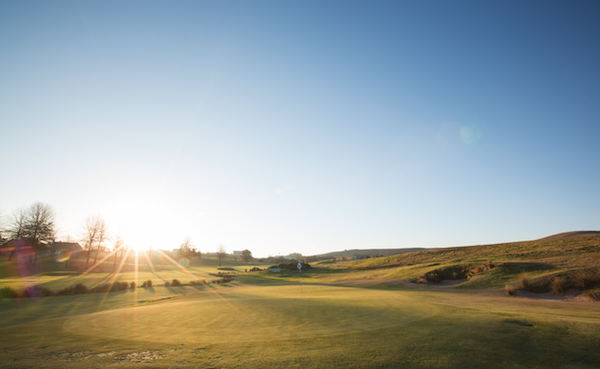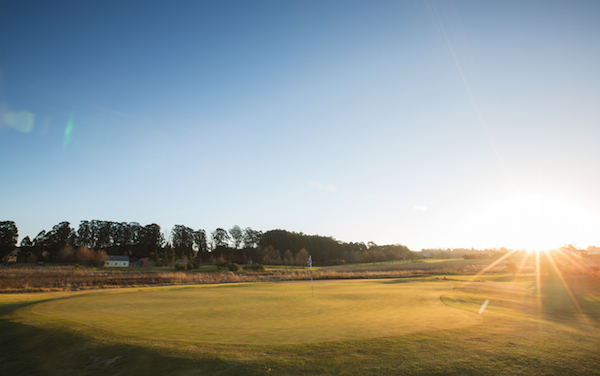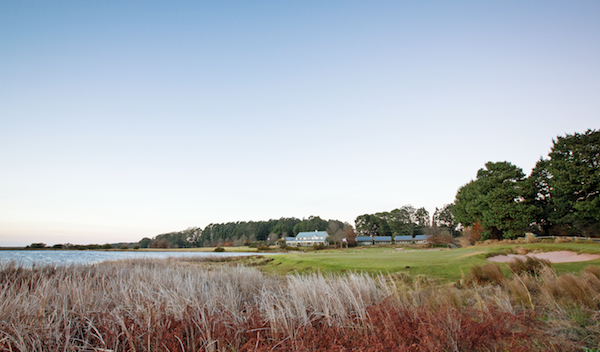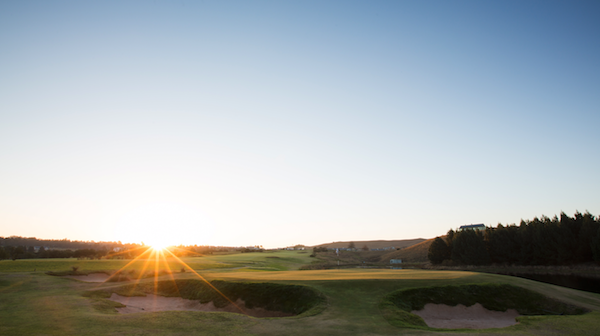Gowrie Farm Golf Course might be rather remote but this treasure in the KZN Midlands is well worth the visit, writes MARK SAMPSON in Compleat Golfer.
Gowrie Farm doesn’t pretend to be the best in the country. To the contrary, they know what they are and work with what they have. The biggest obstacle is its location. Nottingham Road, in the KwaZulu-Natal Midlands, has its challenges, experiencing extreme weather throughout the year.
Most winters have recurring frost, and snow makes an appearance every now and then. With night temperatures well below freezing, course maintenance is a challenge.
On the flipside, these conditions and the location are exactly what attracts tourists for a weekend getaway: trout fishing and exploring the Drakensberg area, which boasts some of the most picturesque countryside South Africa has to offer.
The origin of the farm now known as Gowrie dates back to 1849, in the days when arable land was offered to lure British citizens to what was then known simply as Natal. With the promise of 20 acres and 10 pounds for travel costs, families began to arrive.
Among the first arrivals were the King and Ellis families, but they found reality to be very different from what they were promised. The land they received was neither arable nor fit for farming. Fortunately, they were a family of means, enabling them to stay in the area and explore their options.
Janet King and her four siblings eventually bought land in the Nottingham area. Their farms were named after those related to friends back in Scotland: Balgowan, Lynedoch and Blairgowrie. John King named his farm Gowrie, now within the Gowrie Farm Estate, among a sprinkling of houses and three large lakes.
The golf course is as unique and interesting as the land over which it meanders. Designed by a local Pietermaritzburg-based attorney, Guy Smith, the course is based on the great links of Scotland and some of the earlier US courses such as Pinehurst and Merion, running over hilly, windswept terrain with large bent-grass greens.
It offers a respectable 6006m, par-71 layout with a SAGA rating of 69.
The greens, which can reach speeds of 11 on the Stimpmeter, are undoubtedly one of its great features, as well as challenges. Subtle sloping and numerous swales make for a difficult putting surface. If you are not used to surfaces of this speed, they may prove a bit trying, and leaving the ball below the hole should be the goal of the day. However, they are as true as any across the country, so a well-struck putt has a good chance of finding the hole.
Numerous fairway and greenside bunkers can be expected, with rugged edges laced with tufts of long grass. Avoiding them is advisable, but as that is not always possible, take your medicine and make sure it only costs one shot. Water hazards encroach on 10 of the 18 holes, emphasising the necessity for accuracy. And as the course lies at altitude, the ball flies far and rolls well on the relatively hard fairways.
A unique aspect of Gowrie Farm’s golf course is the fact it has only 12 greens, which means you have to share six. It does take some getting used to, but it makes sense here.
Greens maintenance, in terms of hours and manpower, is reduced and the time needed to prepare the course is also reduced. Another example is the Bosch Hoek golf course,
just down the highway: it has only nine greens.
Gowrie’s feature hole is the par-three 15th.
The course has a number of holes which will linger in your memory; another standout hole is the par-three 4th with its elevated green surrounded by four bunkers and water at the back. It is a tricky one – and when the mist is around, you could almost swear you were playing in Scotland.
The closing hole presents a proper test for the big hitters. At 496m you have to clear a large water hazard twice. From the elevated tee you hit towards a mound of bunkers on the right and on to a fairway that slides from left to right into the water.
If you are too aggressive you will get wet. Success is all about the second shot. The long hitter can go for the green in two, but will need to clear about 170m
of water to a small green with bunkers on either side. The alternative is a short-iron over the hazard to another patch of fairway. From there you have 100m to the green over water. This is the probably the best option for a par or possible birdie for all the short-iron specialists out there.
The estate’s lodge is just the place to stay while in the area.
The warm interior with its thick carpets, never-ending open fire and well-stocked bar makes for a perfect hideaway after the round or during inclement weather. The dining area is hosted in a massive, bright observatory where coffee and breakfast can be enjoyed with a 180-degree view of the lakes and golf course. Regardless of the weather, this room is guaranteed to be light and warm.
Besides the golf, the area has much to offer in terms of art and history. It also offers numerous activities, including mountain biking, hiking and trout fishing. Try to have a few extra days in hand.
Nottingham Road is located in the heart of the KwaZulu-Natal Midlands, with the nearby towns of Mooi River, Kamberg, Hilton and Rosetta all deserving of a visit.
The Nottingham Road area has a variety of accommodation options. If the lodge is full, look no further than the working stud farm of Bellwood. With six cottages to choose from, sleeping 10–16 people and situated around a well-stocked trout dam, this is a great family destination. (bellwood.co.za; 082 495 5033; [email protected])
CONTACT DETAILS


